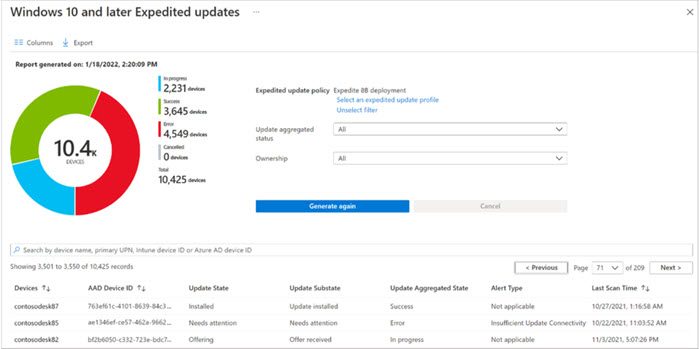In comparison to others, some devices are always slow to install Windows Updates. This prompted Microsoft to conduct research and find why Windows PCs are not always fully up to date. After a lot of research work, the company published its findings in a report labeled as Update Connectivity measurement on its website. Here’s what it revealed!

Why are some Windows PCs not always fully up to date?
What we found is that devices that don’t meet a certain amount of connected time are very unlikely to successfully update. Specifically, data shows that devices need a minimum of two continuous connected hours, and six total connected hours after an update is released to reliably update. This allows for a successful download and background installations that are able to restart or resume once a device is active and connected said Microsoft.
Updating behavior of Windows devices shows inconsistency mainly because of 2 reasons –
- Insufficient Update Connectivity
- Power management.
Microsoft says insufficient Update Connectivity is a significant cause of devices not being current. As such, it advises device owners to leave their devices plugged in and connected—instead of powering them off overnight—so that updates can download and install properly.
The second reason that can be attributed to the failure of Windows Update installation is power management. The company in its investigation found that Some power settings and related policies put a device into a deep sleep or hibernation too quickly. This stops updates from occurring outside active hours. The Optimizing Windows Update Adoption provides recommended power settings that show a good balance of power savings while also enabling devices to keep up to date with the latest security updates.
It comprises a set of tools that empowers enterprise IT administrators to download, test, edit, and store Microsoft-recommended policy configurations for Windows 10 that help them in optimizing deployment and device management.
As a remedial measure, Microsoft suggests selecting devices that have sufficient Update Connectivity. Because if a device has insufficient Update Connectivity, then investigating other update issues may not be possible. Moreover, the low Update Connectivity can create some additional issues.
Summing up, the importance of keeping their devices connected becomes more important than ever if users want their devices to be protected and stay productive.
Leave a Reply